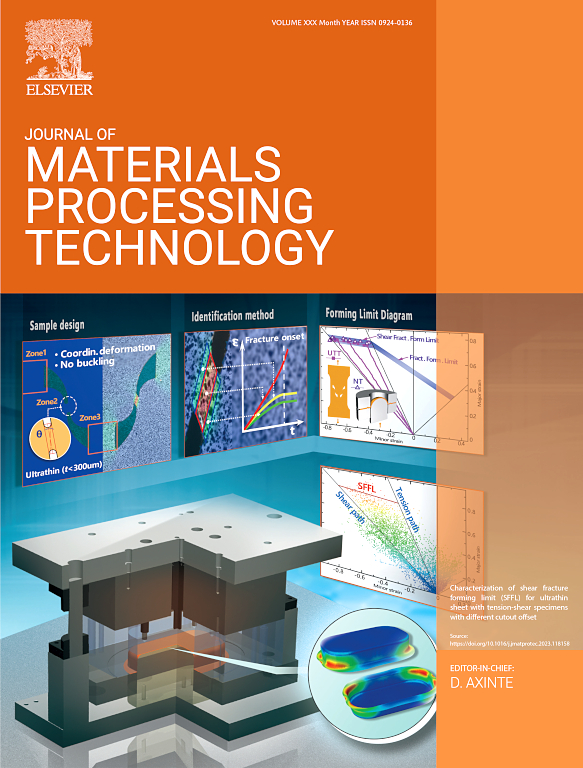Influence of weld size on energy input and interfacial strength during dissimilar ultrasonic welding of stainless steel to titanium
IF 6.7
2区 材料科学
Q1 ENGINEERING, INDUSTRIAL
Journal of Materials Processing Technology
Pub Date : 2025-01-08
DOI:10.1016/j.jmatprotec.2025.118727
引用次数: 0
Abstract
This study explored the impact of weld area size on heat input and its subsequent effects on the microstructure, temperature, and strength at the stainless-steel–Ti interface during ultrasonic spot welding (USW) of dissimilar hard metals with a constant clamping force. It was found that a larger weld area positively affected the strength evolution in the early stages of USW by inducing local plastic flow and bond formation. However, a larger weld area led to dispersion of clamping force, leading to insufficient temperature to trigger Fe-Ti eutectoid reaction, resulting in internal fractures of α-Ti at prolonged welding. In contrast, a smaller weld area (7 ×7) concentrated energy input and accelerated temperature rise to exceed β-transus point, inducing α-to-β phase transformation through the diffusion of β-stabilizer elements from stainless steel to Ti. This phase-transformation behavior reduced the number of interfacial defects and increased the interfacial strength by 37 % (1817 N–2485 N). The findings in this work suggested the importance of elevating temperatures above the β-transus point to improve joint integrity throughout phase transformation to obtain a robust bond.
求助全文
约1分钟内获得全文
求助全文
来源期刊

Journal of Materials Processing Technology
工程技术-材料科学:综合
CiteScore
12.60
自引率
4.80%
发文量
403
审稿时长
29 days
期刊介绍:
The Journal of Materials Processing Technology covers the processing techniques used in manufacturing components from metals and other materials. The journal aims to publish full research papers of original, significant and rigorous work and so to contribute to increased production efficiency and improved component performance.
Areas of interest to the journal include:
• Casting, forming and machining
• Additive processing and joining technologies
• The evolution of material properties under the specific conditions met in manufacturing processes
• Surface engineering when it relates specifically to a manufacturing process
• Design and behavior of equipment and tools.
 求助内容:
求助内容: 应助结果提醒方式:
应助结果提醒方式:


